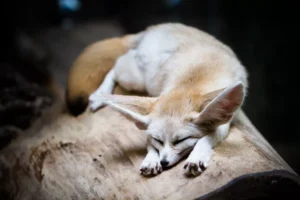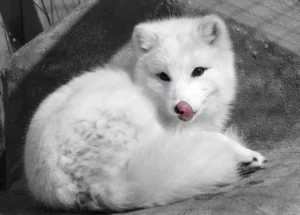Owning a fox as a pet is a thrilling but complicated task.

These lovely animals, belonging to the family Canidae, are somehow similar to domestic dogs but have a great number of features which speak about the uniqueness of their species. With their climbing abilities and how smart they are to the bad behavior of their stubbornness and scent-marking behavior, foxes make ideal and troublesome pets. They are far more demanding than cats or dogs and very few individuals are actually ready to keep them appropriately.
When considering a fox as the pet, it is important to study the regulations of your location.
A fox can legally be seen as a wild animal, exotic pet or native wildlife depending upon your area of residence. In some states they are not allowed to own it privately, let alone they need special permits and licenses. The inability to verify these regulations may result in legal problems and heartbreaks on your part and that of the animal.
The ten most popular species of pets among foxes that are maintained
…are presented in this guide with all their physical characteristics and their behavior and care requirements. Whichever attracts your attention the small fennec fox or the bigger more wolf-like red fox, the knowledge about the personality and biological characteristics of each of them will assist you in taking a rightful and compassionate decision.
Fennec Fox- The Lovely Desert-Inhabitan
One animal that immediately comes to mind upon hearing the term is a fennec fox (Vulpes zerda) with its exaggerated ears that enable it to cool down in its natural desert habitat. This animal appeals to people loving exotic pets because of its small size, mischievous behaviour and vocal response. They are tiny; they are about a Chihuahua in size, but their cuteness does not allow that. The fennec foxes are very active, need a lot of stimulations, and are also quite vocal, particularly during the night.
They are quite a little easier to handle under a household environment compared to other fox species due to their size. They are also too delicate and therefore unfit to be kept in homes with rough playing kids or other bigger pets. Fennec foxes can be litter trained however, they are smart and excitable and need lots of environmental stimulation. This is like the cat trees, the puzzle toys, and a secure area to dig.
Their preys in the wild are insects, rodents, and vegetation. Being pets, they need a proper combination of foods with a high amount of proteins, fresh vegetables and sometimes animal products as snacks. They can develop a destructive behavior or depression in case of the lack of diet and stimulation.

Red Fox: A Traditional that is a Challenge
One of the most widely spread foxes in the world is the red fox (Vulpes vulpes). Red foxes tend to be compared with cats in temperament, curious, independent and sometimes affectionate. Though they may develop an attachment with humans they lack true domestication and have very strong wild instincts.
They are said to have the strongest smelling urine usually of all pet foxes and the smell can be overwhelming even when the foxes are neutered or spayed. Red foxes as well require wide space to move. Holding it in a tiny apartment will be inhumane. They are avid diggers who need an outdoor enclosure that is sturdy.
Nevertheless, red foxes are wonderful creatures whose fur is of beautiful red color, they have black legs and the tip of the long tail is white. They are attractive creatures with expressive faces and seeing eyes but only the most determined owner would be satisfied with them. There are such variants as silver fox which is usually bred in order to decrease the wild tendencies, and temper the animal.
Breeders experimental domestication of Silver Fox: Decades of Result
Silver fox is a domesticated form of red fox; this particular strain is the product of a decade-long experiment in domestication by the Russians. The foxes have evolved with time over generations acquiring more of the characteristics of dogs including wagging of tails, the barking sound and their attraction to human affection. Silver foxes of this program are precious and highly expensive, making some go up to $10,000.
They are tame and manageable unlike the conventional red foxes. They are usually less aggressive and less in the marking behavior and less likely to escape or bite. They share the same food, living conditions, and enrichment requirements of other fox breeds but it is their temperament that makes them one of the more practical choices of a person hoping to keep a fox in a domestic area.
Nevertheless, the possible owners are to know that these foxes are not entirely domesticated like dogs. They require attention, stimulation and space, and cannot be left by themselves over a long time.

Arctic Fox: Spectacular, Yet Hot-blooded
It lives in the artics (extremely cold areas) and it is a smaller breed of fox and it has a thick coat which changes seasons. Though it is a beautiful animal, it is very sensitive to the warm climate and special cooling needs should be taken to keep it in the area with temperate or tropical climate.
The arctic foxes are excessively lively and may be hard to handle in closed area because this kind of foxes are known to burrow and scent-mark their living areas. This may cause destruction of some furniture or fittings as a result of their play games. In addition, because of small gene pools in captivity, inbreeding challenges lead to health problems in some arctic foxes.
They can be very loving and loyal to those who are able to satisfy their needs. They fit the most experienced owners of exotic pets who have the possibility to provide outdoor cages, favorable temperatures, and activities to engage the pet.
Gray Fox: The Kind-natured Fox The Climbing Fox
Gray fox (Urocyon cinereoargenteus) is a tropical animal with a calm and friendly nature. Gray foxes, unlike other foxes, can scale trees and they are friendlier to the human beings. This is one of the reasons they are considered to be a tamer species, though in all senses, they are a wild animal like the rest of foxes.
They are less offensive in their urine but still they are likely to mark and chew. Gray foxes are known to be excessively difficult to house train and they should be housed in outdoor enclosures with climbing opportunities. They can get destructive in the house unless provided with enough exercise and stimulation.
Nonetheless, gray foxes are still one of the more gratifying exotic pets that can be kept because they are loving and more quiet. They attach themselves to their owners and could live in harmony given regular training and grooming.

Bat-Eared Fox: an Insectivore and a Wildheart
The bat-eared fox (Otocyon megalotis) is indigenous to the African grasslands and it is a simple animal to recognise, actually as a result of its huge ears. It feeds on insects and termites mainly in contrast to other foxes and this can be a challenge to offer an appropriate diet.
Being pets, they are not so widespread and their diet needs a special addition of protein and fiber. Bat-eared foxes are shy in nature and they are not as affectionate as other breeds. They also need a burrow-proof housing and can not live inside. To an educated and understanding owner, however, they will be interesting and amusing pets.
It is all linked to the Swift Fox, quiet and friendly.
The swift fox (Vulpes velox) is less-known in the world of exotic pets but the animal is admired due to its silent and peaceful character. Swift foxes are longer adaptable than the red or arctic fox whereas they are easy to housebreak and litter box adaptable. They are not quite vocal and get along well with people.
Swift foxes are omnivorous and require diverse food. In the wild they feed on insects, grasses, fruits and on small mammals. They are also given a mixture of protein, vegetables and fruits in captivity. A swift fox has a life-span of up to 14 years and so, taking care of it becomes a life choice.
Kit Fox: Wise and Wondering
A close relative of the swift fox, a kit fox (Vulpes macrotis) is curious and undaunted. They get along well with their owners and are thus appropriate to individuals who can offer a lot of mental stimulation and environmental enrichment.
These are comparatively simple to litter educate and enjoy a variety of diet with lean meat and kibble that is high in protein. Kit foxes are fond of digging and climbing and it is critical that they ought to be given a safe outdoor enclosure, a sandbox, and climb/play structures such as cat trees.
The fact that they are fairly quiet and smart in their actions makes them the kind of pets to people with an experience in understanding the behavior of exotic pets.

Pale Fox: Unusual and Exceedingly Civic
One of the rarest breeds that can be sought to be made a pet is the pale fox (Vulpes pallida). The Sahara house cat belongs to the Sahara Desert and is a low-odor friendly and loudly vocal species. They readily adjust to human care and they can be trained as compared to several foxes like fennec.
Pale foxes are very expensive and scarcely available to the point of being imported. They need a spacious and dry habitat and prefer to find the hidden food. They may be noisy in their communications but most owners value the expressiveness in them.
Corsac Fox: Nomad Northern
The corsac fox (Vulpes corsac) has its origin in the northern part of Asia; the animal is resistant and easy going. More prevalent in the U.K than the U.S, the lucky owners of them say they are easy to train as well as loving pets.
Corsac foxes need to be bathed on a regular basis in order to make their coats smell good and they love climbing and exploring like other foxes. They are also known to molt very heavily once every year. They are also easy pets and are easy to train, which makes them a good target especially by people who are not keen on very undomesticated species.
Foxes are not suitable pet animals to all people, but to the right person; Foxes can be a very fulfilling and exclusive pet. Irresponsible ownership starts with the lack of knowledge of specific needs of the species and the legal implications of having such a majestic animal. You like the social gray fox or the exotic fennec, either way these are tri-fold key ingredients: preparation, patience and passion.

